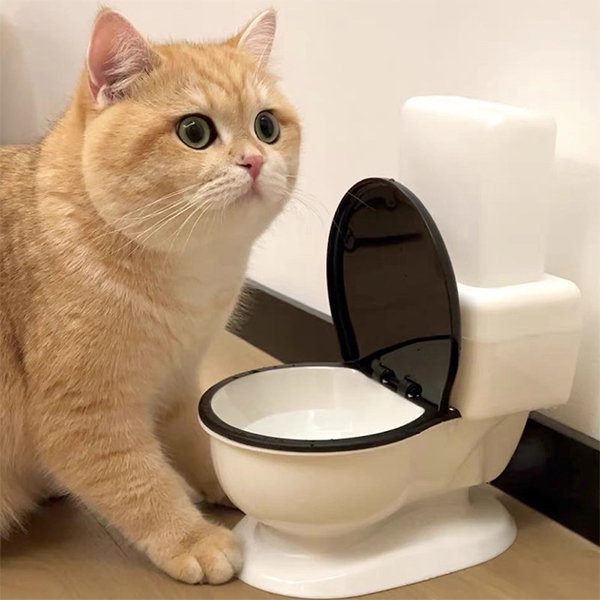Reasons You Should Never Flush Cat Poop Down Your Toilet - Important Facts
Reasons You Should Never Flush Cat Poop Down Your Toilet - Important Facts
Blog Article
This article in the next paragraphs on the subject of Don’t flush cat feces down the toilet is quite motivating. Don't miss it.

Introduction
As cat proprietors, it's vital to be mindful of exactly how we deal with our feline friends' waste. While it might appear practical to flush pet cat poop down the commode, this practice can have destructive effects for both the setting and human health and wellness.
Alternatives to Flushing
Fortunately, there are more secure and a lot more accountable means to take care of pet cat poop. Consider the following alternatives:
1. Scoop and Dispose in Trash
One of the most usual technique of taking care of feline poop is to scoop it right into a naturally degradable bag and throw it in the trash. Make certain to utilize a committed trash inside story and get rid of the waste without delay.
2. Use Biodegradable Litter
Opt for naturally degradable pet cat trash made from products such as corn or wheat. These litters are environmentally friendly and can be securely dealt with in the garbage.
3. Hide in the Yard
If you have a yard, think about hiding feline waste in a marked area away from veggie yards and water sources. Make sure to dig deep adequate to prevent contamination of groundwater.
4. Set Up a Pet Waste Disposal System
Buy a pet waste disposal system specifically developed for pet cat waste. These systems make use of enzymes to break down the waste, decreasing odor and ecological influence.
Health Risks
In addition to ecological problems, purging cat waste can likewise posture wellness risks to people. Feline feces might have Toxoplasma gondii, a parasite that can cause toxoplasmosis-- a potentially serious health problem, specifically for expectant women and individuals with weakened immune systems.
Environmental Impact
Flushing feline poop presents dangerous virus and bloodsuckers right into the water supply, posing a considerable danger to water environments. These impurities can adversely influence aquatic life and concession water high quality.
Final thought
Accountable family pet ownership expands past supplying food and shelter-- it likewise involves proper waste management. By refraining from purging pet cat poop down the bathroom and selecting alternate disposal techniques, we can lessen our environmental footprint and protect human health.
Why Can’t I Flush Cat Poop?
It Spreads a Parasite
Cats are frequently infected with a parasite called toxoplasma gondii. The parasite causes an infection called toxoplasmosis. It is usually harmless to cats. The parasite only uses cat poop as a host for its eggs. Otherwise, the cat’s immune system usually keeps the infection at low enough levels to maintain its own health. But it does not stop the develop of eggs. These eggs are tiny and surprisingly tough. They may survive for a year before they begin to grow. But that’s the problem.
Our wastewater system is not designed to deal with toxoplasmosis eggs. Instead, most eggs will flush from your toilet into sewers and wastewater management plants. After the sewage is treated for many other harmful things in it, it is typically released into local rivers, lakes, or oceans. Here, the toxoplasmosis eggs can find new hosts, including starfish, crabs, otters, and many other wildlife. For many, this is a significant risk to their health. Toxoplasmosis can also end up infecting water sources that are important for agriculture, which means our deer, pigs, and sheep can get infected too.
Is There Risk to Humans?
There can be a risk to human life from flushing cat poop down the toilet. If you do so, the parasites from your cat’s poop can end up in shellfish, game animals, or livestock. If this meat is then served raw or undercooked, the people who eat it can get sick.
In fact, according to the CDC, 40 million people in the United States are infected with toxoplasma gondii. They get it from exposure to infected seafood, or from some kind of cat poop contamination, like drinking from a stream that is contaminated or touching anything that has come into contact with cat poop. That includes just cleaning a cat litter box.
Most people who get infected with these parasites will not develop any symptoms. However, for pregnant women or for those with compromised immune systems, the parasite can cause severe health problems.
How to Handle Cat Poop
The best way to handle cat poop is actually to clean the box more often. The eggs that the parasite sheds will not become active until one to five days after the cat poops. That means that if you clean daily, you’re much less likely to come into direct contact with infectious eggs.
That said, always dispose of cat poop in the garbage and not down the toilet. Wash your hands before and after you clean the litter box, and bring the bag of poop right outside to your garbage bins.
https://trenchlesssolutionsusa.com/why-cant-i-flush-cat-poop/

As a keen reader about Can You Flush Cat Poo or Litter Down the Toilet?, I assumed sharing that excerpt was worth the trouble. Feel free to take the time to distribute this write-up if you enjoyed reading it. Thank you for your time. Please visit our website back soon.
Call Today Report this page